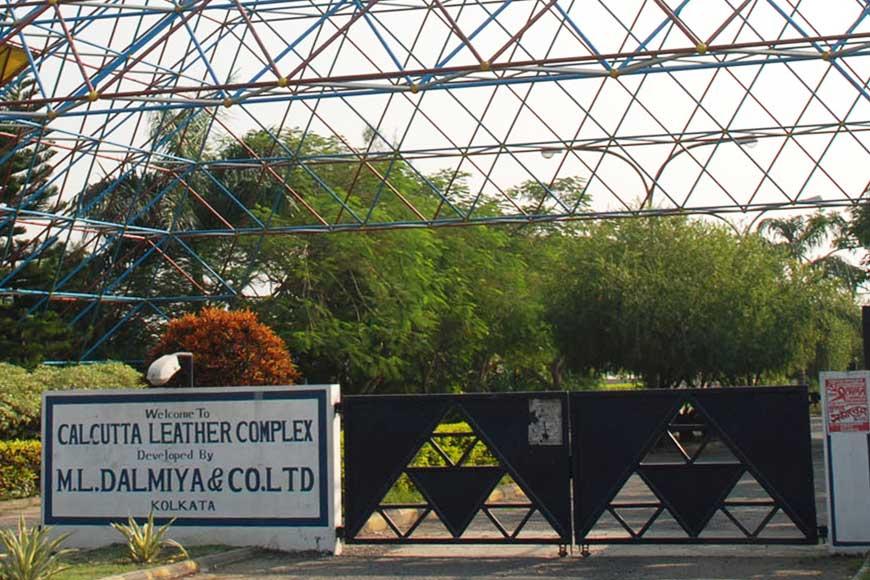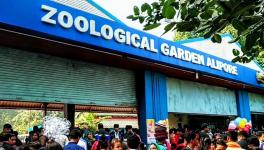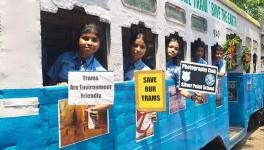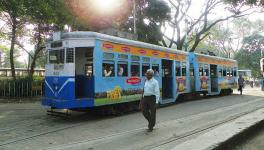Return of Migrant Workers Helps Resumption of City Leather Complex Work in Kolkata

Kolkata: With a large majority of the migrant workers having returned from their native places, work has gathered momentum over the past two months at the Calcutta Leather Complex (CLC) which, when considered with the work-in-progress, is fast emerging as Asia’s largest leather hub.
Inputs from a cross-section of sources, which included tannery owners, finished goods units and a trade union leader, clearly suggest that although the state government had allowed resumption of work at CLC towards end-April yet momentum was missing for several weeks as thousands of migrant workers took time to return from their native places in Bihar, Uttar Pradesh, Jharkhand and Madhya Pradesh. The situation started improving in the tanneries May-end onwards and over the last seven-eight weeks unit owners have been able to process the raw hides that had been lying unprocessed during the lockdown owing to the COVID-19 pandemic.
In the finished goods units, where a majority of those engaged are from West Bengal, owners had accorded priority on servicing incomplete orders and sending out samples for fresh orders. The expectation in CLC as of now is that before long, the remaining 5-7% of the migrant labour would be back to facilitate higher levels of tannery activity. But, for fresh orders for finished goods, the wait would be longer. What is significant is that when owners of finished goods units talk of orders, they invariably mean export orders as for all practical purposes these are export-oriented units. The major export segments are : footwear, leather goods & accessories (including bags, wallets, gloves), finished leather, leather garments and saddler & harness.
For CLC located at Bantala in the eastern fringe of Kolkata in South 24 Parganas district, the last week of September paved the way for a new milestone as work was started for significantly enlarging the capacity of the solid waste management facility with foreign technical expertise and an estimated funding support of Rs 35 crore. It was one more step ahead in CLC’s quest for recognition as the largest leather hub in Asia, which would include a footwear park, according to president of Calcutta Tanners’ Association (CTA) and Eastern Region chairman of Council for Leather Exports (CLE) Ramesh Juneja.
Juneja told NewsClick that this was one rare example of a project in the state for which all preparatory steps were completed in about eight months after negotiations took a concrete shape at the Bengal Business Conclave held at the sea town of Digha in East Medinipur district on December 11 and 12, 2019.
Also read: Migrant Workers: Who Will Penalise Errant Law Enforcers?
Raw hide processing entails use of huge quantities of water to take care of the pollutants. Currently, there are four CETP modules which can take care of 20 million litres of effluents per day. The expansion envisages setting up of four more CETP modules to take the effluent treatment capacity to 40 million litres per day. The number of tanneries is expected to rise to 800 from the existing 375, Juneja informed.
After UP Chief Minister Yogi Adityanath imposed severe curbs on slaughter houses and tanneries in his state, tanners particularly from Kanpur showed interest in setting up facilities at the 1,150-acre CLC hub, christened ‘Karma Diganta’ by CM Mamata Banerjee. West Bengal’s finance, Information Technology and Industry Minister Amit Mitra earlier informed media that the state would be spending Rs 540 crore on CLC. In the context of the interest shown by tannery owners of Kanpur, Mitra said, “One advantage we have over Kanpur is that we do not release our water into the Ganges. It goes to a canal at Bantala which will also be cleared of all chemical deposit as per the current plan.”
The environmental upgradation and tannery personnel’s capacity building project has been christened “Effective Waste Management and Sustainable Development of MSME Tannery Companies in Kolkata”. Involved in its implementation is The Netherlands-based Solidaridad, “a global civil society organisation headquartered at Utrecht.
To be executed under the supervision of senior programme manager of leather & dairy, Soldaridad Asia, Tatheer Zaidi, the interventions have been packaged under five themes. These are:
Management and utilisation of solid waste generated during leather manufacturing, such as, leather cuttings, shaving dust, fleshings into value-added products, such as, paver tiles, bags, wallets, tallow oil etc;
Waste management during leather processing by adoption of water and chemical saving technologies to reduce pollution within the tanning process part;
Capacity building of tannery personnel to adopt best practices related to occupational health and safety :
Skill upgradation of workers to enable them to adopt proven techno-economic practices from the first three interventions and
Formulation of government nominee-headed multi-stakeholder platform
CTA president and regional CLE chairman said environmental upgradation and the proposed footwear park would significantly boost exports from the region. The park, in his reckoning, would have a strong international presence, many years after the advent of Bata in the city. Export value has to be stepped up to Rs 13,000 crore from Rs 6,000 crore in three years – that is the target given by the Centre, he added.
Also read: After Nod to Restart Production, Kanpur Tanneries Face Acute Labour, Raw Material Shortage
Zia Nafis, who operates a tannery unit and a finished good facility under the banner of Zia Nafis Hide Skin Agency, told NewsClick that export activity was picking up very slowly and in his assessment, it would take another five-six months to reach pre-lockdown levels. The European Union is crucial to this sector and once orders start flowing in from the EU, the sentient would get a boost. Return of a majority of the migrant workers – only six remain out of 42 – has certainly helped, Nafis informed and added that he expected the remaining six, too, to return soon “as there is job security”.
Vinit Kumar Khetan, managing director of Vinit Gloves Manufacture, which has four units – one tannery and three finished goods facilities -- under its fold, told NewsClick that in the last two months the units had reached normal levels of operations -- unprocessed raw materials had been handled and unexecuted orders for gloves serviced. “We incurred some loss but we are satisfied that the resumption had been smooth, despite some shortage of workers,” he said. The EU, the US and Japan are key markets. In Khetan’s assessment, order flow would possibly see satisfactory improvement from mid-2021. By then, the heat and dust of the US elections would have settled fully and the domestic business outlook would hopefully be much better than it is now.
Only one trade union – West Bengal Tannery Mazdoor Union affiliated to the All-India Trade Union Congress – is functional in the state’s leather sector. According to this union’s general secretary Premchand Ram, “We have managed to survive since 1972 despite many attempts by vested interests to see us fold up. Trinamool Congress backs owners ; may be as part of the state government’s policy.” He said that originally the union was set up by Indian National Trade Union Congress in 1954 and subsequently it came under the AITUC fold.
It is difficult to get an estimate of the total workforce, particularly migrant workers. When asked about his assessment, Ram told NewsClick that some 40,000 migrant workers are engaged in tannery activity. On the finished goods side, there are about 15,000 Bengal-speaking workers.
So far, efforts of the Centre of Indian Trade Unions to establish its presence in the sector have not been successful. After TMC came to power in 2011, it had applied for registration. But, in the words of CITU activist in South 24 Parganas district Tulu Ghosh Dastidar, the state government had set stiff conditions which they found difficult to accept. “But, we have not given up; we are waiting for an opportunity to apply again for registration,” Ghosh Dastidar told NewsClick.
Also read: Exclusive Trade Unions for Migrant Workers Take Shape Across State
Get the latest reports & analysis with people's perspective on Protests, movements & deep analytical videos, discussions of the current affairs in your Telegram app. Subscribe to NewsClick's Telegram channel & get Real-Time updates on stories, as they get published on our website.
























